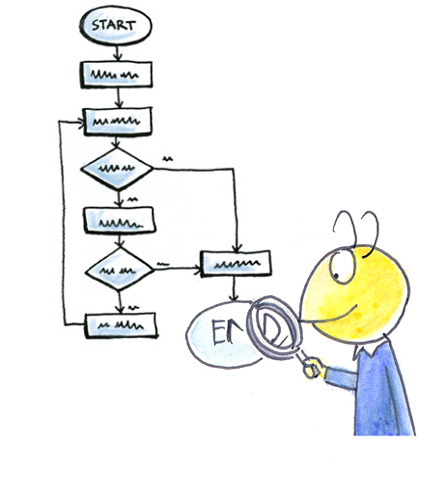Transformation with Purpose
A Call to Action
In today’s fast-evolving world, transformation is not just a buzzword; it’s a necessity (Barack Obama about Change). Organisations, whether public or private, are under constant pressure to adapt, innovate, and stay relevant.
Yet, successful transformation requires more than change for change’s sake. It demands a purpose – a clear understanding of why transformation is needed and what it aims to achieve.
This purpose must be rooted in addressing tangible problems, improving outcomes, and meeting the needs of the people we serve – our customers, citizens, or stakeholders. Without this clarity, transformation initiatives risk becoming empty exercises that drain resources and fail to inspire action.
Understanding the Cost of Inaction
A common barrier to transformation is the lack of recognition of the problem itself. When people don’t see what’s broken, they’re unlikely to invest the time and effort required to fix it.
This inertia is especially damaging when it leads to missed opportunities or unmet customer expectations.
Take, for example, a policy department handling grant applications. Imagine the process takes several months due to inefficient workflows and siloed communication.
For applicants waiting on decisions that could make or break their initiatives or impact their well-being, this delay is more than an inconvenience – it’s a deterrent to innovation and progress. Over time, word spreads, trust erodes, and stakeholders may look elsewhere for support.
Such outcomes highlight the critical need for transformation. Without addressing the root causes – fragmented processes, lack of collaboration, or outdated systems – organisations risk becoming irrelevant in the eyes of their customers.
The Negative Impacts of Disconnection
When teams work in isolation, it’s not just efficiency that suffers. The lack of collaboration creates ripple effects across the organisation:
- Inefficient Processes: Tasks are duplicated, handoffs are unclear, and bottlenecks form. This slows down decision-making, leading to frustration among employees and customers alike.
- Missed Opportunities: Silos stifle innovation, as teams fail to share insights or align on shared goals. Potential solutions to systemic problems remain undiscovered.
- Customer Dissatisfaction: At the heart of every transformation is the customer experience. When processes are cumbersome, customers feel neglected. They lose confidence in the organisation’s ability to meet their needs, damaging its reputation.
Recognising the Need for Change
Acknowledging the need for transformation starts with a clear-eyed assessment of current processes. Leaders must ask:
- Where are we falling short?
- What are the pain points for our customers and employees?
- What would happen if we don’t improve?
This reflection is not about assigning blame but uncovering opportunities for growth.
When employees and stakeholders see the tangible benefits of change – shorter decision times, smoother interactions, and happier customers – they’re more likely to champion transformation efforts.
For instance, if a policy department reimagines its grant approval process with a focus on simplicity and speed, the results could be profound.
By streamlining workflows, automating repetitive tasks, and fostering collaboration, we could cut decision times in half. This doesn’t just improve efficiency; it restores trust and credibility with the public.
Transformation Is Always About Processes
At its core, transformation is about improving or reinventing processes – making them easier, faster, less troublesome, and more customer-centric.
While this might sound operational, even strategic changes depend on the underlying processes that support them.
In the context of a policy department, transformation might involve redesigning workflows to:
- Enhance Accessibility: Make it easier for applicants to navigate systems and access information.
- Reduce Friction: Eliminate unnecessary steps, approvals, or redundancies in the process.
- Improve Responsiveness: Equip teams with the tools and insights they need to act quickly and confidently.
- Align with Customer Needs: Ensure every step of the process delivers value to the customer, rather than merely fulfilling internal requirements.
By focusing on these elements, organisations can shift from reactive, siloed operations to proactive, integrated systems that prioritise customer outcomes.
The Role of Leadership in Driving Transformation
Leadership plays a pivotal role in successful transformation. Leaders must articulate the purpose of change, build a compelling case for why it matters, and align teams around shared goals.
Equally important, they must provide the tools, resources, and support employees need to succeed.
This involves:
- Communicating the Vision: Clearly explain the why behind the transformation and its expected benefits.
- Modelling Collaboration: Break down silos by fostering cross-departmental cooperation and shared accountability.
- Celebrating Wins: Highlight early successes to build momentum and demonstrate the value of the transformation.
The Customer-Centric Imperative
Ultimately, every transformation effort should be evaluated through the lens of customer impact. Are we making it easier for them to engage with us? Do we address their needs more effectively? Are we creating experiences that foster trust and loyalty?
A Call to Transform
Transformation isn’t easy, but it is essential.
It starts with purpose, grows through collaboration, and succeeds when processes are reimagined to deliver greater value.
By focusing on these principles, organisations can meet the needs of their customers, empower their teams, and build a foundation for long-term success.
The question isn’t whether to transform, but how soon – and how purposefully – you can begin.















